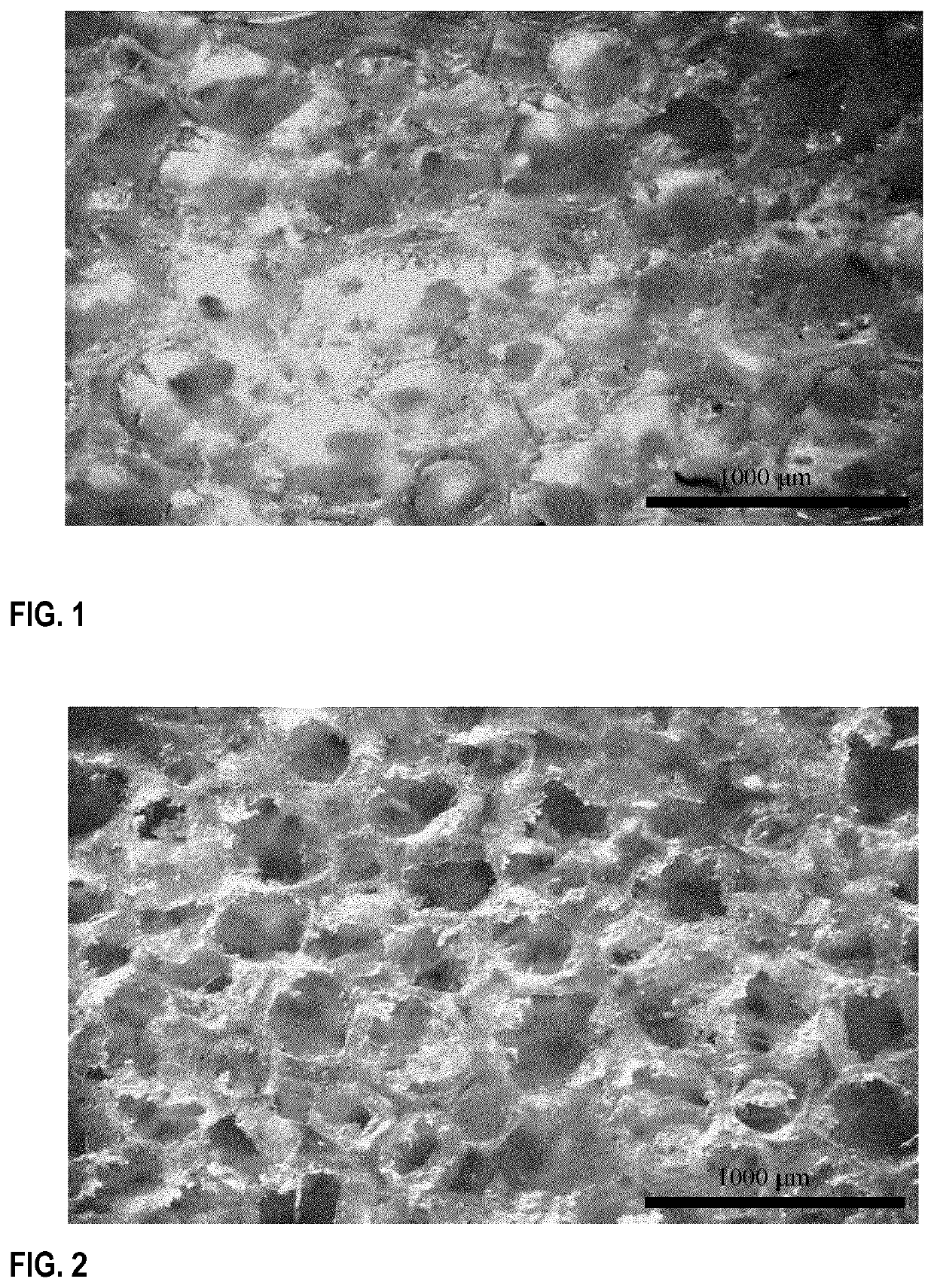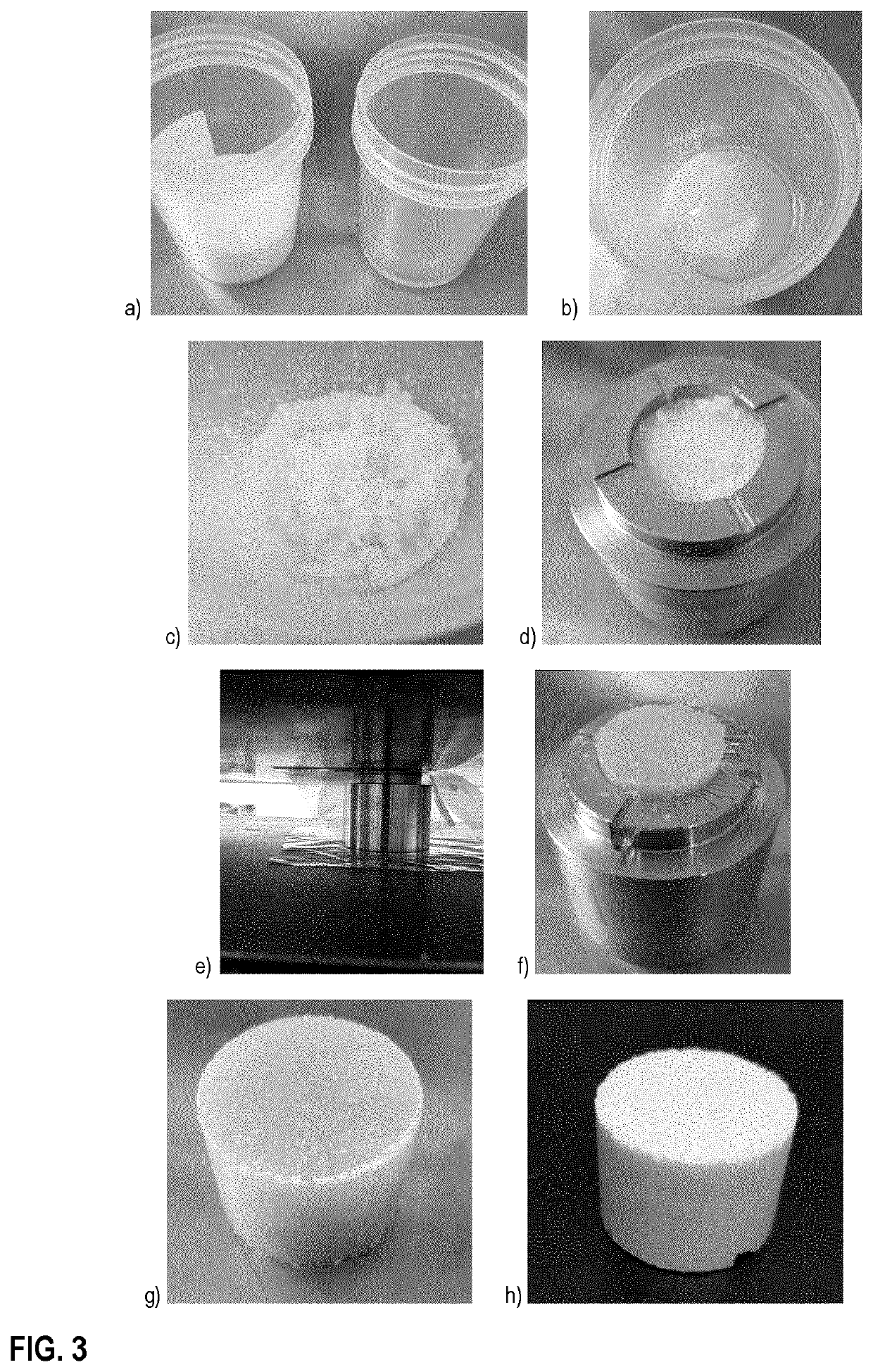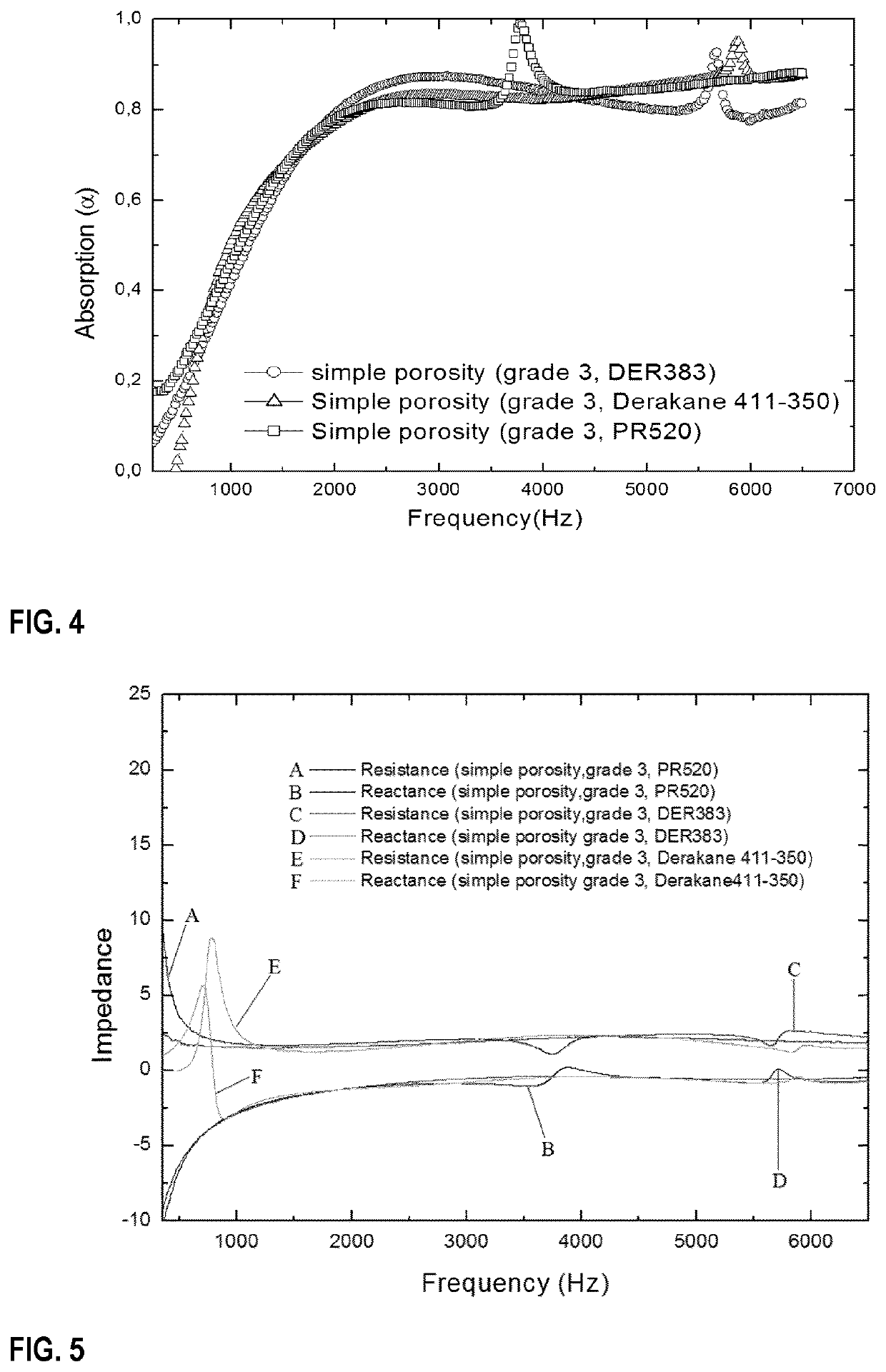Openly porous acoustic foam, process for manufacture and uses thereof
- Summary
- Abstract
- Description
- Claims
- Application Information
AI Technical Summary
Benefits of technology
Problems solved by technology
Method used
Image
Examples
example 1
Openly Porous Acoustic Foams
Experimental Details
[0288]The present invention is illustrated in further details by the following non-limiting examples.
[0289]Various openly porous acoustic foams were made and their acoustic properties were measured using an impedance tube of 30 mm in diameter with two upstream microphones and rigid backing wall (absorption configuration). The openly porous acoustic foams had a diameter of 30 mm and a thickness varying from 10 mm to 35 mm. The thermosetting resins used for these tests were Derakane 411-350, DER383, Cycom PR520, and Sympoxy 1960G. FIGS. 1 and 2 are images taken with an optical microscope which show structured foams made using DER383 and PR520, respectively, with open pores between 200 and 400 microns in size. The tests carried out with the impedance tube gave an absorption coefficient of between 0.6 and 0.95 and a resistance (real part of the acoustic impedance) of less than 5 kg / s·m2 over a frequency range of 500 to 6400 Hz. These resul...
example 2
[0320]Foams were prepared as described in Example 1 using Derakane 411-350 and salt crystals of 1000 μm in size in a crystal:resin ratio of 80:20. The pressure applied before curing was varied between from 20 to 65 MPa. The resin was cured at room temperature. The leaching lasted 2 to 4 days (without heat).
[0321]The acoustic and mechanical properties of the foams (absorption coefficient and compression modulus) were measured. FIG. 8 shows the global absorption coefficient of the foam produced as a function of the pressure applied. FIG. 9 shows the compression modulus of the foam produced as a function of the pressure applied.
example 3
[0322]Foams were prepared as described in Example 1 using Derakane 411-350 and salt crystals of 1000 μm in size in a crystal:resin ratio of 80:20. The quantity of salt used was varied. The resin was cured at room temperature. The leaching lasted 2 to 4 days (without heat).
[0323]The thickness of the resulting foams obtained with the three different pressures (25, 30, and 35 kN) was measured and is shown in FIG. 10. The thickness increases linearly with the quantity of salt used. Linear regressions curves were calculated for each pressure tested (also shown on FIG. 10) and used to calculate the quantity of salt used required to obtain a sample of a given thickness (15 mm). Then, foams were produced using the calculated quantity of salt used and their thickness measured. The desired thickness (15 mm) was indeed observed—see big lozenges on FIG. 10.
PUM
| Property | Measurement | Unit |
|---|---|---|
| Fraction | aaaaa | aaaaa |
| Fraction | aaaaa | aaaaa |
| Fraction | aaaaa | aaaaa |
Abstract
Description
Claims
Application Information
 Login to View More
Login to View More - R&D
- Intellectual Property
- Life Sciences
- Materials
- Tech Scout
- Unparalleled Data Quality
- Higher Quality Content
- 60% Fewer Hallucinations
Browse by: Latest US Patents, China's latest patents, Technical Efficacy Thesaurus, Application Domain, Technology Topic, Popular Technical Reports.
© 2025 PatSnap. All rights reserved.Legal|Privacy policy|Modern Slavery Act Transparency Statement|Sitemap|About US| Contact US: help@patsnap.com



